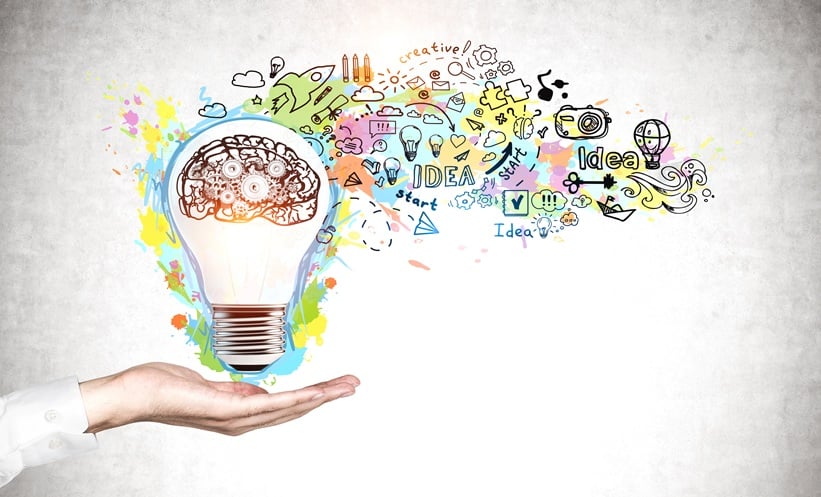Authors: *Jonathan E. Attwood1
1. Nuffield Department of Clinical Neurosciences, University of Oxford, UK
*Correspondence to [email protected]
Disclosure: The author has declared no conflicts of interest.
Keywords: Autonomic dysfunction, biomarkers in concussion, endocrine dysfunction, glymphatic system, mild traumatic brain injury (mTBI), neurodegeneration, post-traumatic headache, sports neurology, traumatic brain injury (TBI), traumatic brain injury biomarkers.
Citation: Neurol AMJ. 2025;2[1]:21-25. https://doi.org/10.33590/neurolamj/PGND2630
![]()
The Annual Meeting of the American Academy of Neurology (AAN) continues to attract neurologists from around the world due to its high-quality clinical education sessions and groundbreaking research updates. Sports neurology has featured at the conference since 2010, reflecting sustained attention on mild traumatic brain injury and increasing interest in the care of athletes with other neurological conditions. This year in San Diego, California, sessions dedicated to sports neurology and mild traumatic brain injury ran throughout the meeting, beginning with a comprehensive day of talks directed by Meeryo Choe, University of California Los Angeles, and Nicole Reams, NorthShore University HealthSystem, Evanston, Illinois. This report summarises key themes and take-home messages from these presentations.
ENDOCRINE DYSFUNCTION AFTER MILD TRAUMATIC BRAIN INJURY
Jeffrey Bazarian, University of Rochester School of Public Health-Bloomington, Indiana, gave an illuminating presentation on endocrine dysfunction following concussion, highlighting a relatively under-explored aspect of traumatic brain injury (TBI) pathophysiology. After detailing the vulnerability of the pituitary stalk to traction, ischemia, and potential autoimmune damage, Bazarian addressed how little is known about the acute endocrine response to mild TBI (mTBI). He summarized compelling evidence indicating pituitary dysfunction in the subacute phase post-injury. For example, although concussion does not appear to affect hormone levels at the group level, lower hormone levels are associated with prolonged recovery, and a diminished cortisol awakening response correlates with more severe symptoms after mTBI.1,2
Bazarian also presented work from his group on gene expression changes following concussion, particular involving the follicle-stimulating hormone/luteinizing hormone pathway, which may go some way to explaining the link between concussion and menstrual irregularities.3 Chronic endocrine dysfunction was also discussed, illustrated by a study of female ice hockey players with mTBI, revealing that more than 60% had persistently abnormal hormone levels, necessitating medical treatment in 10%.4 This session strongly highlighted the need for further research in this area.
BRAIN INJURIES FROM INTIMATE PARTNER VIOLENCE
Carrie Esopenko, Icahn School of Medicine at Mount Sinai, New York, delivered a powerful talk on brain injuries resulting from intimate partner violence (IPV). Although IPV differs from sports-related concussion, Esopenko clarified its relevance to healthcare providers who care for athletes. IPV affects one in three women, disproportionately impacting young women, women of color, individuals with disabilities, and military service members. At least 50% of women affected by IPV report head trauma, though the actual prevalence may be even higher.
Esopenko described IPV-related brain injury, involving impact, shaking, and strangulation mechanisms, resulting in a distinctive combination of focal, diffuse, and hypoxic insults.5 The overlap with psychological trauma, post-traumatic stress disorder, and other mental health conditions presents significant diagnostic, prognostic, and management challenges, spotlighting IPV-related brain injury as an urgent, underserved research area.
BIOMARKERS OF MILD TRAUMATIC BRAIN INJURY
Ramon Diaz-Arrastia, University of Pennsylvania Perelman School of Medicine, Philadelphia, provided a reflective update on mTBI biomarkers. While acknowledging the slow clinical adoption of blood-based biomarkers, and noting their narrow FDA approval criteria, he emphasized their potential utility in pitch-side, military, and low-resource environments. Although these biomarkers may have limited applications in the diagnosis of concussion, they hold promise for identifying which patients require urgent evaluation in the emergency department, counselling on symptom duration, guiding return-to-play decisions, and informing discussions about when to end participation in contact sports. To make progress towards these aims, Diaz-Arrastia underscored the need for age-specific reference intervals and international standards for assay calibration.6
POST-TRAUMATIC HEADACHE, AUTONOMIC DYSFUNCTION, AND MILD TRAUMATIC BRAIN INJURY IN MILITARY POPULATIONS
In a more clinically-focused session, Erik Beltran, NorthShore University HealthSystem, Evanston, Illinois, discussed concussion mimics, noting that up to 20% of athletes and military personnel without a history of brain injury report symptoms meeting International Classification of Diseases, 10th Revision (ICD-10) criteria for post-concussion syndrome.7 Beltran explored differential diagnoses for the unwell athlete such as dehydration, electrolyte disturbances, vestibular disorders, ocular and cervical injuries, and autonomic disorders like postural orthostatic tachycardia syndrome.
John Leddy, University of Buffalo, New York, summarized his influential research on post-traumatic autonomic dysfunction, including the effects of concussion on sympathetic and parasympathetic function and baroceptor sensitivity.8-10 Leddy stressed the clinical significance of both orthostatic and exercise intolerance, and detailed his approach to the diagnosis and management of postural orthostatic tachycardia syndrome, a theme expanded on by Rachel Pearson, University of California Irvine, later in the week.
Amaal Starling, Mayo Clinic Arizona, Phoenix, Arizona, broke down her approach to the athlete with headache, sharing pearls of wisdom through illustrative cases. David Brody, Uniformed Services University of Health Sciences, Bethesda, Maryland, then provided a military perspective, highlighting the importance of sleep after brain injury and discussing stimulant use for attention deficit hyperactivity disorder, and potential benefits in managing post-traumatic stress disorder after mTBI.11
THE GLYMPHATIC SYSTEM, SLEEP DISRUPTION, AND NEURODEGENERATION IN TRAUMATIC BRAIN INJURY
Michael Jaffee, University of Florida, Gainesville, delivered a keynote highlighting the potential role of the glymphatic system in TBI-related neurodegeneration. Extending arguments from his 2018 review, he proposed connections between reduced glymphatic flow, impaired waste clearance, and chronic traumatic encephalopathy pathology.12 He also discussed advanced neuroimaging techniques for assessing the glymphatic system, including magnetic resonance imaging-visible perivascular spaces and diffusion tensor imaging along perivascular spaces.
In a later talk, Juan Piantino, Oregon Health and Science University, Portland, Oregon, focused on the impact of sleep dysfunction on glymphatic flow after mTBI.13 Piantino shared his group’s recent work confirming that intrathecal gadolinium moves through the perivascular space into the brain parenchyma in humans.14 He also examined evidence that interstitial flow through the brain is driven by vasomotor oscillations and hypothesized that cerebral edema after TBI may interfere with this pump-like action.
MILD TRAUMATIC BRAIN INJURY RESEARCH: YEAR IN REVIEW
To round off the day, Chris Giza, University of California Los Angeles, updated the ‘neurometabolic cascade’ model of concussion, emphasizing that: “mTBI pathophysiology is more than neuronal and more than metabolic”. Specifically, Giza discussed the effects of mTBI on astrocytes, with implications for blood–brain barrier integrity and glymphatic function, microglial-mediated neuroinflammation, and synaptic reconfiguration. Looking to the future, Giza highlighted the application of biomarkers in characterizing the endophenotypes of individuals with persistent symptoms.15 Finally, Christina Master, University of Pennsylvania Perelman School of Medicine, Philadelphia, concluded with a succinct review of clinical mTBI studies, covering the effectiveness of helmets, the effect of sport-related etiology on outcomes, and social determinants of health impacting recovery.16-20
CONCLUSION
The AAN 2025 Annual Meeting reaffirmed the importance and increasing complexity of sports neurology, highlighting key knowledge gaps and new research directions in mTBI care. These highlights offer a snapshot of how the field continues to evolve, emphasizing opportunities for collaboration and innovation in the search for diagnostic and therapeutic strategies to ultimately enhance patient outcomes and performance.





